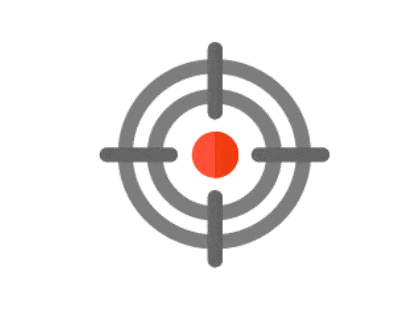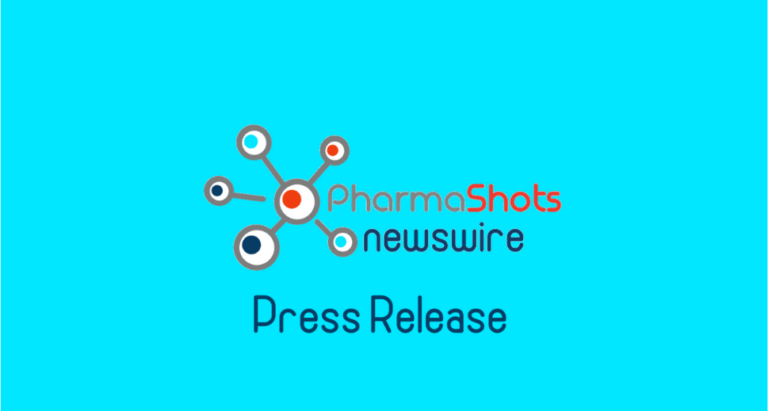New Zolgensma data demonstrate age-appropriate development when used presymptomatically and rapid, clinically meaningful efficacy in symptomatic children, even those with severe SMA at baseli
 Basel, June 18, 2021???Novartis today announced data that reinforce the transformational benefit of Zolgensma??(onasemnogene?abeparvovec), an essential, one-time treatment and the only gene therapy for spinal muscular atrophy (SMA). New late-breaker data from the completed two-copy cohort of the Phase 3 SPR1NT clinical trial demonstrate age-appropriate milestone development in presymptomatic children with SMA without respiratory or nutritional support of any kind, and with no serious, treatment-related adverse events. The completed Phase 3 STR1VE-EU trial demonstrated rapid improvements in motor function following treatment with Zolgensma, and the majority of patients achieved motor milestones not observed in the natural history of SMA Type 1. Safety remained consistent with previously reported data. The data will be presented at the European Academy for Neurology (EAN) Virtual Congress 2021.
The Zolgensma data represent a significant contrast to the natural history of SMA Type 1, which leads to progressive and irreversible loss of motor function and if left untreated, often death or permanent ventilation by the age of two years.2,3?Remarkably, all children (100 percent) treated presymptomatically in the SPR1NT two-copy cohort achieved event-free survival, were independent of respiratory and nutritional support and met the primary endpoint of sitting independently for =30 seconds, including 11/14 (79 percent) who achieved this milestone within the World Health Organization (WHO) window of normal development.4?A majority of patients went on to stand independently (11/14) and walk independently (9/14), most within the typical range of normal development.4
Among symptomatic children with SMA Type 1 treated in the STR1VE-EU trial, including patients with more severe disease at baseline, the majority of children (82 percent) achieved developmental motor milestones not observed in the natural history of SMA Type 1, including 16 children (49 percent) who sat without support for =30 seconds.5
?With more than 1,200 children now treated, these data presented at EAN further reinforce the life-changing benefit of a one-time treatment of Zolgensma,? said Shephard Mpofu, M.D., SVP, Chief Medical Officer, Novartis Gene Therapies. ?When treated with Zolgensma prior to the onset of symptoms, not only did all patients survive, but were thriving ? breathing and eating on their own and sitting independently, with many standing and walking. When you consider these newborns would go on to develop?severe symptoms of SMA Type 1, a devastating, progressive disease that robs children of the ability to talk, eat, sit up and even breathe, findings from the SPR1NT trial are nothing short of extraordinary.?
?STR1VE-EU included some patients with more severe SMA at baseline, yet the study demonstrated consistent and significant therapeutic benefit for symptomatic children with SMA Type 1,? said Professor Eugenio Mercuri, M.D., PhD., Department of Pediatric Neurology, Catholic University, Rome, Italy. ?This is a remarkable outcome that adds to the robust body of clinical evidence for Zolgensma showing that even among patients with more severe disease, Zolgensma was highly effective and demonstrated a consistent safety profile.?
Final Phase 3 SPR1NT Two-Copy Cohort Results
SPR1NT is a Phase 3, open-label, single-arm, multi-center trial designed to evaluate the safety and efficacy of a one-time intravenous (IV) infusion of Zolgensma in presymptomatic patients with a genetic diagnosis of SMA and two or three copies of?SMN2?who were =6 weeks of age. Fourteen patients with two copies of?SMN2?and 15 patients with three copies of?SMN2?were treated. The majority of patients with two copies of?SMN2?develop SMA Type 1, the most common form accounting for 60 percent of cases. Data reported at EAN reflect the final data cut for SPR1NT two-copy patients. Mean age at dosing in the two-copy cohort was 20.6 days (8 ? 34 days). The study of the three-copy cohort is ongoing.
Two-copy cohort (n=14) final results:
Basel, June 18, 2021???Novartis today announced data that reinforce the transformational benefit of Zolgensma??(onasemnogene?abeparvovec), an essential, one-time treatment and the only gene therapy for spinal muscular atrophy (SMA). New late-breaker data from the completed two-copy cohort of the Phase 3 SPR1NT clinical trial demonstrate age-appropriate milestone development in presymptomatic children with SMA without respiratory or nutritional support of any kind, and with no serious, treatment-related adverse events. The completed Phase 3 STR1VE-EU trial demonstrated rapid improvements in motor function following treatment with Zolgensma, and the majority of patients achieved motor milestones not observed in the natural history of SMA Type 1. Safety remained consistent with previously reported data. The data will be presented at the European Academy for Neurology (EAN) Virtual Congress 2021.
The Zolgensma data represent a significant contrast to the natural history of SMA Type 1, which leads to progressive and irreversible loss of motor function and if left untreated, often death or permanent ventilation by the age of two years.2,3?Remarkably, all children (100 percent) treated presymptomatically in the SPR1NT two-copy cohort achieved event-free survival, were independent of respiratory and nutritional support and met the primary endpoint of sitting independently for =30 seconds, including 11/14 (79 percent) who achieved this milestone within the World Health Organization (WHO) window of normal development.4?A majority of patients went on to stand independently (11/14) and walk independently (9/14), most within the typical range of normal development.4
Among symptomatic children with SMA Type 1 treated in the STR1VE-EU trial, including patients with more severe disease at baseline, the majority of children (82 percent) achieved developmental motor milestones not observed in the natural history of SMA Type 1, including 16 children (49 percent) who sat without support for =30 seconds.5
?With more than 1,200 children now treated, these data presented at EAN further reinforce the life-changing benefit of a one-time treatment of Zolgensma,? said Shephard Mpofu, M.D., SVP, Chief Medical Officer, Novartis Gene Therapies. ?When treated with Zolgensma prior to the onset of symptoms, not only did all patients survive, but were thriving ? breathing and eating on their own and sitting independently, with many standing and walking. When you consider these newborns would go on to develop?severe symptoms of SMA Type 1, a devastating, progressive disease that robs children of the ability to talk, eat, sit up and even breathe, findings from the SPR1NT trial are nothing short of extraordinary.?
?STR1VE-EU included some patients with more severe SMA at baseline, yet the study demonstrated consistent and significant therapeutic benefit for symptomatic children with SMA Type 1,? said Professor Eugenio Mercuri, M.D., PhD., Department of Pediatric Neurology, Catholic University, Rome, Italy. ?This is a remarkable outcome that adds to the robust body of clinical evidence for Zolgensma showing that even among patients with more severe disease, Zolgensma was highly effective and demonstrated a consistent safety profile.?
Final Phase 3 SPR1NT Two-Copy Cohort Results
SPR1NT is a Phase 3, open-label, single-arm, multi-center trial designed to evaluate the safety and efficacy of a one-time intravenous (IV) infusion of Zolgensma in presymptomatic patients with a genetic diagnosis of SMA and two or three copies of?SMN2?who were =6 weeks of age. Fourteen patients with two copies of?SMN2?and 15 patients with three copies of?SMN2?were treated. The majority of patients with two copies of?SMN2?develop SMA Type 1, the most common form accounting for 60 percent of cases. Data reported at EAN reflect the final data cut for SPR1NT two-copy patients. Mean age at dosing in the two-copy cohort was 20.6 days (8 ? 34 days). The study of the three-copy cohort is ongoing.
Two-copy cohort (n=14) final results:
- One hundred percent of patients (14/14) met the secondary endpoint of survival without ventilatory support of any kind at 14 months of age,4?versus only 26 percent of patients in the Pediatric Neuromuscular Clinical Research (PNCR) natural history cohort.6
- All patients (100 percent) achieved the primary endpoint of sitting independently for at least 30 seconds, including 11 (79 percent) who achieved this milestone within the WHO window of normal development.4
- Eleven patients (79 percent) could stand independently, seven of whom achieved this milestone within the WHO window of normal development.4
- Nine patients (64 percent) could walk independently, five of whom achieved this milestone within the WHO window of normal development.4
- All patients (100 percent) were independent of nutritional and respiratory support for the duration of the study.4
- Nearly all patients (13/14) achieved the additional secondary efficacy endpoint of age-appropriate weight maintenance without non-oral feeding support at any visit up to 18 months of age.4
- All patients (100 percent) achieved or maintained a Children's Hospital of Philadelphia Infant Test of Neuromuscular Disorders (CHOP INTEND) score of =58.4?According to natural history, untreated patients with SMA Type 1 almost never achieve a CHOP INTEND score of =40.6
- All patients (100 percent) had Bayley-III fine motor performance scores similar to same-age peers without SMA and the majority (64 percent) had gross motor performance scores similar to same-age peers without SMA.4
- Thirty-three patients were enrolled; and 32 patients completed the study.
- Twenty-seven of 33 patients (82 percent) achieved developmental motor milestones not observed in the natural history of SMA Type 1.5
- Fourteen of 32 patients (44 percent) in the intention-to-treat (ITT) population achieved the primary endpoint of sitting independently for =10 seconds, observed at a median age of 15.9 months (7.7?18.6). The patient who was not in the ITT population also achieved this primary outcome measure.5
- Twenty-three of 30 patients (77 percent) achieved head control (three already had control at baseline), 19 of 33 (58 percent) rolled from back to sides and 16 patients (49 percent) sat without support for =30 seconds, including all patients who met the primary endpoint of sitting without support for =10 seconds.5
- In addition, two patients stood with assistance, and one crawled, stood, pulled to stand, and walked without assistance, all by 18 months of age.5
- Thirty-one of 32 patients (97 percent) achieved the secondary efficacy endpoint of survival, free from permanent ventilatory support at 14 months,5?compared with a quarter of patients (26 percent) in the PNCR natural history cohort.6
- The majority of patients (73 percent) achieved a CHOP INTEND score of =40 points, 14 (42 percent) achieved a score of =50 points and three (9 percent) achieved a score of =58 points.5?According to natural history, untreated patients with SMA Type 1 almost never achieve a CHOP INTEND score =40.6
- Thirteen of 33 patients (39 percent) remained independent of any type of daily ventilatory support at 18 months of age,5?compared with none in the PNCR data set.6
- Of the nine patients who required ventilatory support at baseline, two achieved independence, and of the 24 patients who did not require ventilatory support at baseline, a majority of patients (67 percent) remained free from this support at the end of the study.5
# # #
References- Novartis. 2021. Q1 2021 Results Investor presentation [PowerPoint Presentation]. Available at:?https://www.novartis.com/sites/www.novartis.com/files/q1-2021-investor-presentation.pdf. Accessed May 2021
- Anderton RS and Mastaglia FL.?Expert Rev Neurother. 2015;15(8):895?908.
- Finkel RS, McDermott MP, Kaufmann P. et al. Observational study of spinal muscular atrophy type I and implications for clinical trials.?Neurology. 2014;83(9):810-7.
- Strauss K. et al. Onasemnogene Abeparvovec for Presymptomatic Infants with Spinal Muscular Atrophy and 2 Copies of SMN2: A Phase III Study. Abstract presented at the 7th?Congress of the European Academy of Neurology. 19?22 June 2021.
- Mercuri E. et al. Gene replacement therapy for symptomatic spinal muscular atrophy type 1: final results of the Phase III STR1VE-EU study. Abstract presented at the 7th?Congress of the European Academy of Neurology. 19?22 June 2021.
- Pediatric Neuromuscular Clinical Research. PNCR Database: Weights (kg) by Patient Ages (Months) for SMA Types I, II, and III All Visits.
- National Organization for Rare Disorders (NORD). Spinal Muscular Atrophy. Available at:?http://rarediseases.org/rarediseases/spinal-muscular-atrophy/. Accessed May 2021.
- Soler-Botija C, et al. Brain. 2002;125(7):1624-1634.
- Wang CH, et al. J Child Neurol. 2007;22(8):1027-1049.
- Darras BT, Finkel RS. ?Natural history of spinal muscular atrophy.? In: Sumner CJ, Paushkin S, Ko CP, eds. Spinal Muscular Atrophy: Disease Mechanisms and Therapy, 2nd ed. London, UK: Academic Press/Elsevier;2017:399-421.
# # #
Novartis Media Relations E-mail:?media.relations@novartis.com
| Anja von Treskow Novartis External Communications +41 79 392 8697 (mobile) anja.von_treskow@novartis.com Julie Masow Novartis US External Communications +1 862 579 8456 julie.masow@novartis.com | Farah Bulsara Speer SVP, Corporate Communications, Novartis Gene Therapies +1 312 543 2881 (mobile) farah.speer@novartis.com |
| Central | North America | ||
| Samir Shah | +41 61 324 7944 | Sloan Simpson | +1 862 778 5052 |
| Thomas Hungerbuehler | +41 61 324 8425 | ||
| Isabella Zinck | +41 61 324 7188 |
# # #





